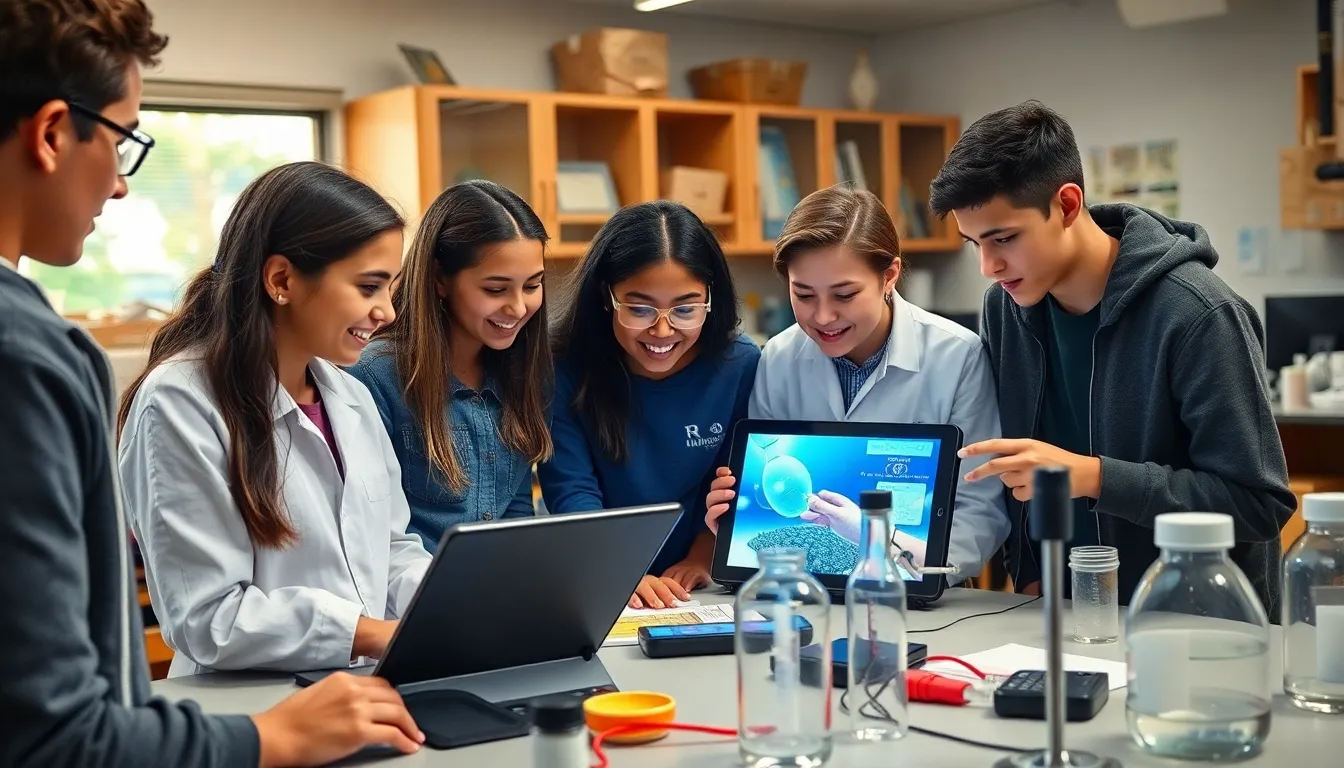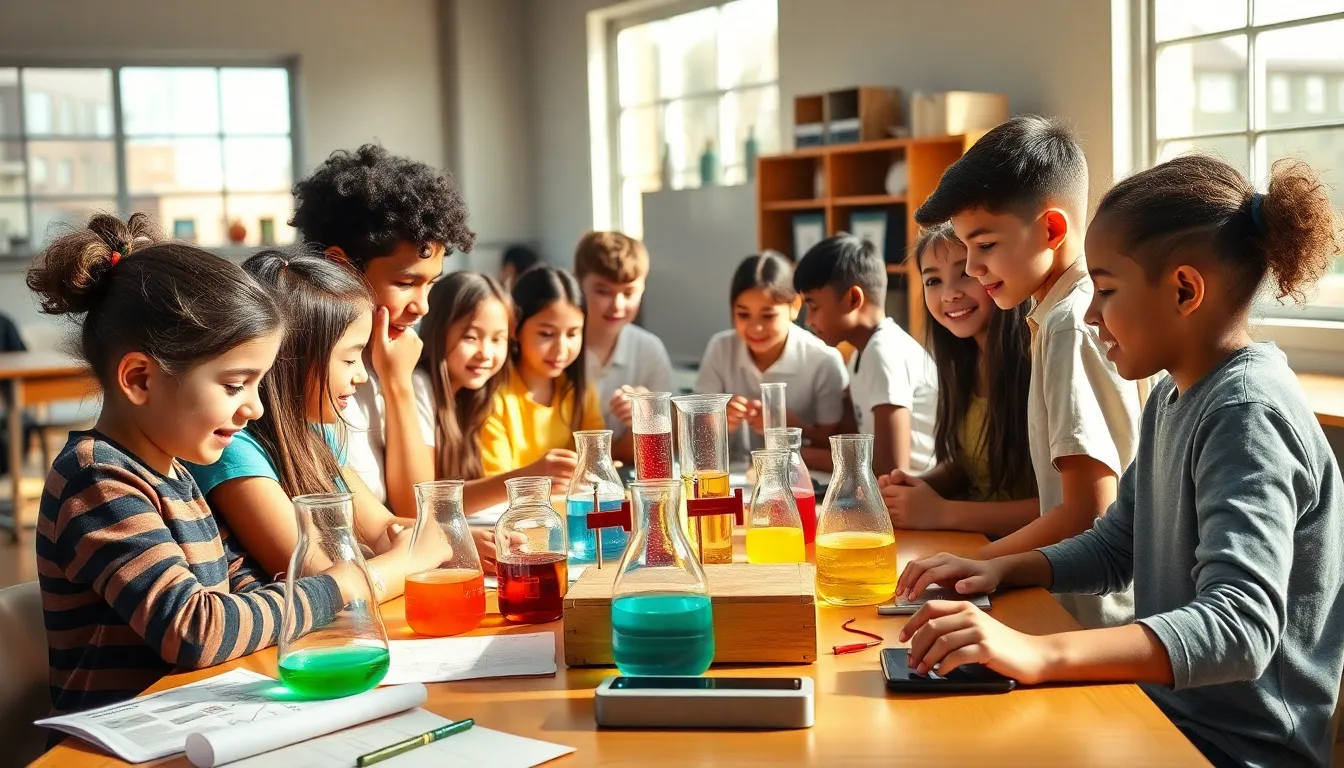In today’s rapidly evolving world, science education stands at the forefront of innovation and discovery. As technology reshapes industries and daily life, educators are adapting their approaches to engage students and foster a deeper understanding of scientific principles. This shift not only enhances learning experiences but also prepares students for future challenges in a science-driven society.
Emerging trends in science education reflect a growing emphasis on hands-on learning, interdisciplinary approaches, and the integration of digital tools. By embracing these trends, educators can cultivate critical thinking and problem-solving skills essential for the next generation. As schools and institutions navigate these changes, they’re not just teaching facts; they’re inspiring curiosity and a lifelong passion for science.
Table of Contents
ToggleOverview of Science Education Trends
Science education trends focus on engaging students through innovative teaching methods, emphasizing hands-on experiences, and integrating technology. This shift promotes active learning and nurtures critical thinking abilities.
Hands-On Learning
Hands-on learning allows students to directly engage with scientific concepts. Experiments, laboratory exercises, and outdoor explorations create tangible connections to theoretical knowledge. Research indicates that experiential learning improves retention rates by approximately 75% compared to traditional lecture formats.
Interdisciplinary Approaches
Interdisciplinary approaches integrate science with other subjects, such as mathematics and technology. This method encourages students to see connections between various disciplines, fostering a more comprehensive understanding of scientific principles. Schools that implement interdisciplinary curricula report higher student engagement and enthusiasm for science subjects.
Digital Tools and Resources
Digital tools enhance the availability and accessibility of science education resources. Online simulations, virtual labs, and educational apps provide interactive platforms for learning. They also allow for personalized education, catering to individual learning paces. Statistics show that students utilizing digital resources score 15% higher on assessments than those relying solely on textbook materials.
Emphasis on Critical Thinking
Critical thinking skills are a crucial focus in modern science education. Educators encourage inquiry-based learning, prompting students to ask questions, conduct research, and analyze data. Studies suggest that students who engage in problem-based learning develop stronger analytical skills, which directly contribute to academic success.
Collaboration and Communication
Collaboration and communication play significant roles in today’s science classrooms. Group projects and discussions foster teamwork while enhancing communication skills. Schools that prioritize these elements often experience improved classroom dynamics and more effective problem-solving approaches.
Lifelong Learning
Science education trends aim to cultivate a lifelong passion for science. By instilling curiosity and the desire for continuous learning, educators prepare students for future scientific endeavors. Programs that promote real-world applications of scientific knowledge drive this trend, bridging the gap between classroom learning and practical experiences.
Innovative Teaching Methods

Innovative teaching methods enhance science education by engaging students and improving their understanding of complex concepts. Two notable approaches include project-based learning and interactive technology integration.
Project-Based Learning
Project-based learning (PBL) emphasizes hands-on experiences where students tackle real-world problems. In PBL initiatives, students work on projects that require applying scientific methods and principles. This approach fosters collaboration, critical thinking, and creativity. According to research, students engaged in PBL tend to retain information better and demonstrate an increased interest in science. Increased motivation stems from working on meaningful projects, resulting in deeper learning experiences.
Interactive Technology Integration
Interactive technology integration in science education involves incorporating digital tools to enhance learning. Educators utilize applications, simulations, and online resources to create immersive experiences. Technologies such as virtual laboratories and augmented reality provide practical applications of scientific concepts. Statistics indicate that students using interactive tools show a 15-20% improvement in assessment scores compared to traditional methods. This approach also encourages self-paced learning, allowing students to explore topics at their own speed, thus fostering independence and enthusiasm for science.
Curriculum Developments
Curriculum developments in science education reflect evolving methodologies designed to engage students further and enhance their understanding of scientific principles. These trends emphasize innovative approaches and content that align with contemporary societal needs.
STEM and STEAM Approaches
STEM (Science, Technology, Engineering, Mathematics) and STEAM (STEM + Arts) approaches gain traction in curricula across educational institutions. They promote integration of disciplines, fostering creativity and critical thinking in students. These models encourage students to tackle problems through a hands-on, interdisciplinary lens, showcasing the interconnectedness of various fields. Schools implementing STEM/STEAM curricula report improved student engagement, with 75% of educators noting enhanced analytical skills among participants. Additionally, project-based experiences within these frameworks allow students to create solutions for real-world challenges, promoting cooperation and ingenuity in knowledge application.
Inclusion of Environmental Science
The inclusion of environmental science plays a crucial role in contemporary science curricula. It addresses pressing global issues such as climate change, biodiversity, and sustainability, preparing students to be informed citizens. Research shows that integrating environmental science into science education can improve student awareness and engagement, with 80% of students expressing increased interest in environmental topics when discussed in class. Educators use project-based assignments involving local ecosystems, enabling students to explore scientific concepts through direct observation and research. This approach not only deepens understanding but also cultivates a sense of responsibility toward the environment, equipping students with the knowledge to advocate for sustainable practices.
Assessment Strategies
Assessment strategies in science education play a critical role in understanding student progress and effectiveness of educational approaches. Formative and summative assessments, along with competency-based assessment methods, emerge as essential frameworks for evaluating student learning.
Formative vs. Summative Assessments
Formative assessments occur during the learning process, allowing educators to gather feedback and adjust instruction in real-time. Techniques such as quizzes, discussions, and observational assessments enable teachers to identify student challenges early, facilitating targeted interventions. Research indicates that students engaged in formative assessments display improved retention and mastery of scientific concepts.
Summative assessments, conversely, evaluate student learning at the end of an instructional period. These assessments, including final exams and standardized tests, measure student proficiency and achievement against set benchmarks. While valuable for determining overall performance, summative assessments may not reflect ongoing student development. Balancing both formative and summative methods provides a comprehensive understanding of student learning trajectories.
Competency-Based Assessment
Competency-based assessment focuses on student mastery of specific skills and knowledge, prioritizing individual learning paths. This approach emphasizes demonstration of competencies through practical applications and projects. Science education benefits greatly from this method, as students can engage in real-world experiments and problem-solving activities that showcase their understanding and application of scientific principles.
Additionally, competency-based assessment accommodates diverse learning styles. Students progress at their own pace, ensuring they achieve mastery before advancing to more complex concepts. Continuous feedback provides motivation, fostering an environment where students take ownership of their learning. Adopting competency-based assessment aligns well with the trends of hands-on and inquiry-based learning, reinforcing the development of critical thinking and analytical skills essential for future scientific endeavors.
Impact of Science Education Trends
Science education trends significantly influence student engagement and performance, shaping how individuals interact with scientific concepts. These trends facilitate improved learning experiences and outcomes.
Student Engagement and Performance
Hands-on learning experiences foster direct interactions with scientific concepts, leading to enhanced retention rates. Students engaged in experiments and outdoor explorations demonstrate increased curiosity and enthusiasm for scientific inquiry. Interdisciplinary approaches integrate science with mathematics and technology, offering a holistic understanding that resonates with diverse learners. Digital tools enhance accessibility, allowing students to utilize educational resources that lead to 10-15% higher performance on assessments compared to traditional methods. Collaborative classroom dynamics nurture teamwork and communication skills, further improving student engagement and motivating them to participate actively in their learning journey.
Teacher Training and Professional Development
Effective teacher training programs focus on innovative teaching strategies aligned with modern educational trends. Professional development equips educators with skills in interactive technology integration and project-based learning (PBL) methodologies. Ongoing training emphasizes the importance of inquiry-based learning, allowing teachers to encourage critical thinking and problem-solving skills. Schools that invest in professional development report higher job satisfaction among teachers, ultimately leading to better support for student learning. Continuous professional development also ensures educators are adept at implementing STEM and STEAM approaches, fostering an engaging and dynamic learning environment that appeals to students’ interests and prepares them for future challenges in science.
The landscape of science education is evolving rapidly to meet the needs of today’s learners. By embracing hands-on learning and interdisciplinary approaches educators are fostering a deeper understanding of scientific concepts. The integration of digital tools not only enhances accessibility but also engages students more effectively.
As these trends continue to shape classrooms the emphasis on critical thinking and collaboration prepares students for real-world challenges. Innovative methodologies like project-based learning and competency-based assessments are crucial in nurturing a passion for science. Ultimately the commitment to evolving educational practices will empower students to thrive in a science-driven future.



